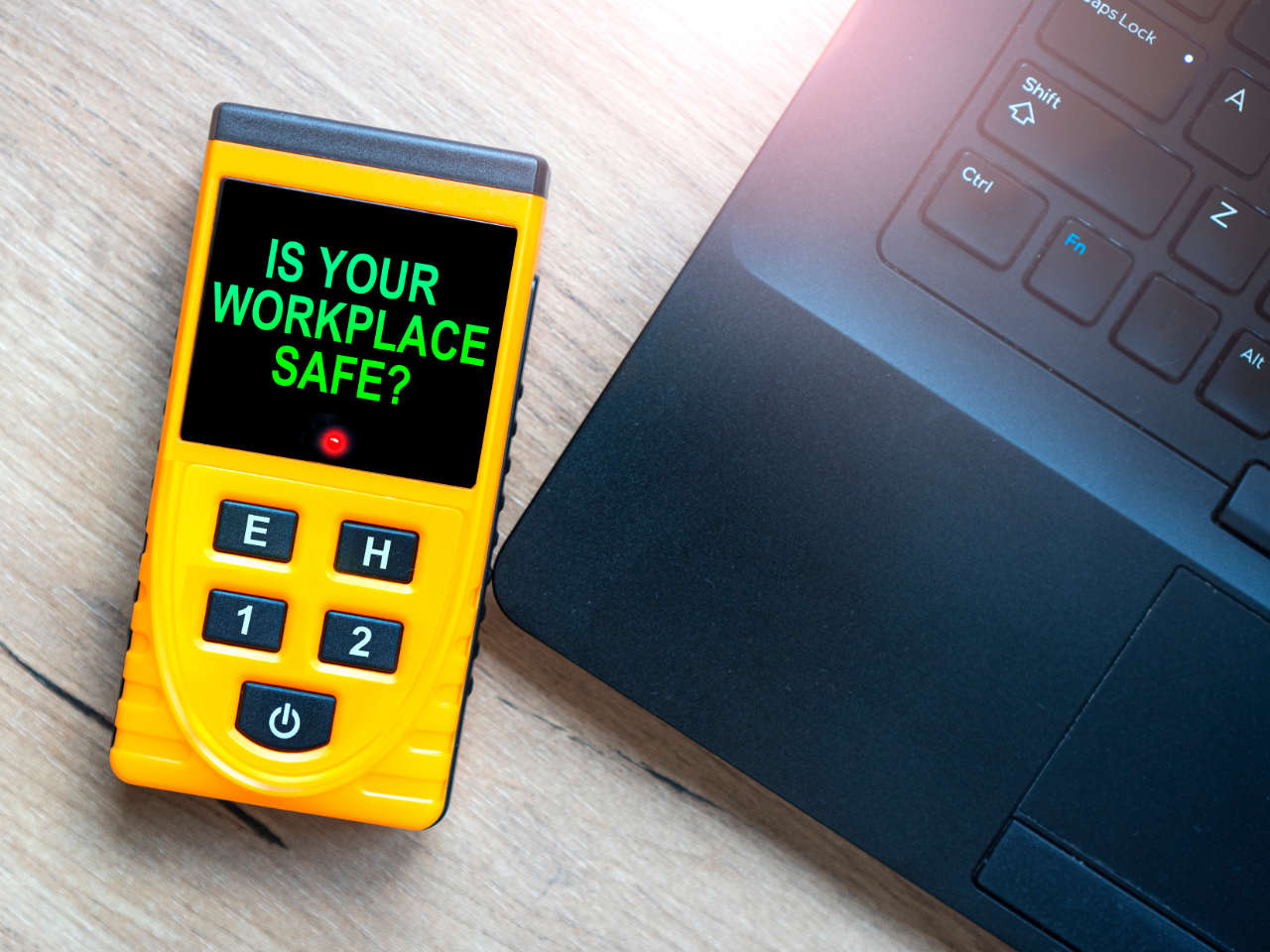
Electromagnetic fields at work guidance note A guide to the Control of Electromagnetic Fields at Work Regulations 2016 HSG281 is available from the HSE as a free download.
As predicted, there are no surprises with the guidance or approach. Our partner Link Microteck has been involved in the consultation of this guide, which has resulted in a pragmatic solution and recognition of what is already being done to manage electromagnetic fields (EMFs) and radio frequencies (RF).
What are EMFS and RFs?
Electromagnetic fields are areas of moving electrical energy.
They can be naturally produced, such as during thunderstorms, or derived from human-made technologies. Radio waves and x-rays count as technology examples. We are exposed to EMFs on a daily basis. For example, using a mobile phone or walking near power lines at a safe distance both expose you to human-produced produce EMFs.
Radio frequencies refer to shifting electric currents moving through conductive materials.
At low levels EMFs and RFs do not harm humans or cause any adverse effects. However, at high levels and after prolonged exposure, they can cause harm to human tissue. This is why guidance regarding working within EMF and RF fields is important to follow, both as an employer and an employee.
What are the control of electromagnetic field at work regulations?
The requirements of the Regulations placed on employers are to:
- Assess the levels of EMFs and RFs to which employees may be exposed.
- Ensure that exposure is below a set of ‘exposure limit values’ (ELVs).
- When appropriate, devise and implement an action plan to ensure compliance within the exposure limits.
- When appropriate, assess the risks of employees’ exposure and address those risks.
- Focus on high-risk employees, such as expectant mothers and workers with medical devices on their person.
- Provision of information and training on the particular risks of EMFs and RFs in the workplace, and any actions taken to control said risk.
- Taking action if employees are exposed to EMFs or RFs in excess of the ELVs.
- Provision of health surveillance or medical examination when appropriate.
All employees who are regularly exposed to EMFs and RFs as part of their duties must undergo EMF and RF awareness training. Our EMF and RF Online Awareness training course helps ensure employees can work safely around EMF and RF-producing equipment.
The Control of Electromagnetic Fields at Work guidance
The guidance describes what EMFs and RFs are and the effects they have on the body.
There is a strong message that while EMFs and RFs exist in a number of forms in various workplaces, most EMFs and RFs operate within safe levels and have no effects on the body. The guide includes a table that contains a non-exhaustive list of low-exposure equipment which can be used by employers, however any assessment should consider exposure from equipment not under the direct control of the employer. This includes cases where a worker visits other workplaces.
Focus must be on workers who are at particular risk, which would include those:
- Those wearing active implanted medical devices, such as a pacemaker.
- Those with passive implanted medical devices, such as artificial joints, metallic plates, pins or shrapnel.
- With medical devices worn on the body, such as hormone infusion pumps.
- Pregnant workers.
Workers in these categories may be at greater risk from EMFs and RFs than the general working population. Therefore, they should be subject to a specific risk assessment in regards to the control of electromagnetic fields at work. In considering whether workers may be at particular risk, employers should keep in mind the frequency, level and duration of exposure to EMFs and RFs.
Employers need to find out if they have at-risk workers in their population, which means that training, awareness, communication and information gathering will be an essential element of a risk management approach.
One area that will need close attention will be the consultation and participation of workers in the risk assessment process, and the requirement to provide workers with information and training. By having employees involved in the risk assessment process from the beginning, employers can gain critical insight into risks and hazards their employees face whilst doing their duties that had not been considered before.
To help employers get the message out there in terms of workers understanding EMFs and RFs, activity levels and the associated risks to them, our IOSH-approved EMF and RF online training course has been just been updated to take into account the requirements of the regulations and guidance.
Ensure your organisation complies with the guide to the Control of Electromagnetic Fields at Work Regulations 2016 with our EMF and RF Online Awareness training. Fully IOSH Approved, CPD Certified and SCORM Compliant training.

Tom Escobar
Director of Services & Training
